Co – pg 20
PAyloAd WeIghINg & MeASurINg SySteMS
Walz Scale – pg 9
troMMel BruSheS
Power Brushes Inc – pg 3
WeAr PArtS
Armorhog – pg 3
quadco uSA – pg 14

Co – pg 20
PAyloAd WeIghINg & MeASurINg SySteMS
Walz Scale – pg 9
troMMel BruSheS
Power Brushes Inc – pg 3
WeAr PArtS
Armorhog – pg 3
quadco uSA – pg 14

 By p.j. heller
By p.j. heller
Toothpaste. Kitty litter. Outdoor pizza ovens. Ceiling tiles. Garden and landscape growing material. Pipe insulation. Soaps. Environmental spill cleanup kits. Those items and more have one ingredient in common that many people may not be aware of: perlite.
“Perlite is all around us,” notes Michael Dunlavey in discussing a mineral found throughout the horticultural, construction and industrial industries.
Dunlavey is president of Perlite Vermiculite Packaging Industries (PVP Industries), a family-run business that supplies both perlite and vermiculite to customers worldwide. Most of the company’s business – which is roughly 60 percent in the horticulture market, 30 percent in the industrial sector and 10 percent in the construction area -- is within 500 miles of its North Bloomfield, Ohio, plant, although niche sales have gone to Alaska, Switzerland, Bermuda and Trinidad and Tobago.

“We will ship anywhere,” Dunlavey says. “We will service anybody that we can who is willing to work with us.
“Horticulture is still our mainstay,” he adds. “Perlite and vermiculite are extensively used in many, many, many different industries . . . There are a thousand different uses for each mineral.”

Dunlavey, along with company vice president Lenny Maheu and plant manager David Sinn, have spent their entire lives working in the business.
“I grew up around the kitchen table learning about this stuff my whole life,” says Dunlavey, whose father, Paul Dunlavey, started the company in 1984 with Colin Urbanowicz. Production began a year later. The company was launched after Cleveland Builders Supply decided to disband its gypsum division, where Urbanowicz had worked. Dunlavey was an outside accountant hired to evaluate the company’s various divisions. The two men joined forces in the new
“Colin saw a vision that the horticulture industry was going to be the mainstay for perlite and vermiculite in the future,” Dunlavey recalls. “My father was a numbers guy, a CPA, not
Paul Dunlavey became the primary owner in the 1990s and Maheu – who has been with the company since its start 39 years ago and is its longest serving employee –helped the business carry on. Sinn, the plant manager, has been with the company for 37 years. Paul Dunlavey passed away in November 2022.
Michael Dunlavey joined the business about 15 years ago, first working in the plant for two years and then moving into sales. He previously worked doing landscape construction and maintenance for landscape companies throughout the greater Cleveland area.
“I got my first job landscaping at 13 years old because I wanted to get a new bicycle,” he says. “I have a green thumb in my background.”
Today, Dunlavey heads PVP Industries which employs 20 people.

Continued from page 1
“I would like to operate closer to 30 people but with the labor market the way it is right now, we’re holding strong at 20,” he says.
The plant, on nearly 20 acres, includes two 80-by-250-foot buildings which each contain an Incon perlite furnace, and a large fabric structure that houses raw materials. The company also operates a Bouldon Lawson mixing line consisting of five 10-yard hoppers, three small hoppers and a liquid feeder with a 250-gallon storage tank. In addition to selling truckload quantities of perlite and vermiculite, it packages its own products in its easily recognizable white and green bags and does co-packing and private label packing for other companies, some of which end up being sold by aspiring entrepreneurs on Amazon.
“Ten years ago, we would sell one or two truckloads every quarter to Amazon,” Dunlavey says. “Right now, we’re shipping three to five truckloads a week, all throughout the country.”
Another fabric building for warehouse space is expected to be added. Dunlavey is also eying other sites for another perlite factory because of the growth potential.
“I’m doing things to try to advance the company, to keep us relevant in the marketplace and move us into the 21st century of a soil-producing, mineral aggregateproducing operation,” he says. Like others in the horticulture industry, he recognizes how seasonal the market is with companies going through highs and lows.
During the Covid-19 pandemic, when people stayed home from the office, the perlite business, as well as other garden-related product sales, boomed as homeowners worked in their yards and gardens. Vermiculite, however, was in short supply due to supply chain problems, primarily overseas shipping and port issues, Dunlavey says.
“We kind of lost our way prior to Covid,” he reflects. “People got caught up in the rat race of life. Covid sort of slowed us down a little bit. One thing about gardening and having a green thumb is it’s very therapeutic. A lot of people got into it and experienced the stress relief of working in the garden, as well as doing different hobbies and projects.
“Schools are now bringing gardening programs back into the curriculum, offering different classes and more hands-on learning in gardening and landscaping that is critical to society,” he says. “You can’t survive as a society without food. These products [perlite and vermiculite] make poor soil act better and improve the quality so you can have a successful garden. I think every garden should have perlite and vermiculite in it.”
Vermiculite mixes with the soil and helps to retain water; it can soak up more than three times its volume in water. It is typically mixed with soil, peat, composted pine bark, fertilizers, pesticides and herbicides and promotes faster root growth and quick anchorage to young roots.
Perlite increases drainage to the soil and mixes with it. When bulk perlite is mixed with organic compost, natural soils or composted bark, it helps anchor the roots of young plants so they grow stronger. Both have neutral pH levels. and help with soil aeration.
“Wherever there’s sandy soil, there’s a perlite or vermiculite particle size that can help,” Dunlavey says. “If you have clay-like soil, you want the bigger particles because it helps break the clay apart. If you have soil that is too moist, you want bigger particles so more air gets to the roots. If you’re in a very dry environment like California or Arizona, you want finer particles because
they maintain more moisture. It’s very adaptive.”
Dunlavey sees huge growth potential in the construction industry, where perlite is already used in such things as ceiling tiles, roof insulation products, pipe insulation, filling in masonry block construction, and refractory bricks designed to withstand very high temperatures.
“Construction applications for expanded perlite are numerous because it is fire resistant, an excellent insulator, and lightweight,” the U.S. Geological Survey notes, adding “Novel and small markets for perlite have increased during the past 10 years; cosmetics, environmental remediation, and personal care products have become increasing markets for perlite.”
Perlite is also used as a filter aid in industries ranging from food processing to pharmaceuticals. It is also used in water and wastewater treatment.
Another growing market Dunlavey sees is controlled environment agriculture (CEA), which creates a fully controlled environment to optimize horticultural practices for growing high-quality plants.
PVP Industries uses between 10,000 and 17,500 tons of perlite annually, the equivalent of 100 to 175 one-hundred-ton rail cars. Vermiculite usage is about 40 percent of that total and is brought in by truck and shipping container.

The company’s primary source of perlite -- a pure naturally occurring volcanic glass created when volcanic obsidian glass gets saturated with water over a long period of time -- comes primarily from mines in Oregon and California. Deposits are located from Alaska to the Panama Canal, throughout the entire Rocky Mountain region and in Greece, Turkey and China.
Continued
www.SoilandMulchProducerNews.com
Publisher / Editor Rick Downing
Contributing Editors / Writers
P. J. Heller • Robert LaGasse
Sandy Woodthorpe
Production & Layout Christine Mantush
Advertising Sales
Rick Downing
Subscription / Circulation
Donna Downing
Editorial, Circulation & Advertising Office 6075 Hopkins Road, Mentor, OH 44060

Ph: 440-257-6453 • Fax: 440-257-6459
Email: downassoc2@oh.rr.com
Subscription information, call 440-257-6453.


Soil & Mulch Producer News is published bimonthly by Downing & Associates. Reproductions or transmission in whole or in part, without written permission of the publisher, is prohibited.





Annual subscription rate U.S. is $19.95. Outside of the U.S. add $10 ($29.95). Contact our main office, or mail-in the subscription form with payment.
©Copyright 2023 by Downing & Associates



Continued from page 3
“Although China was the leading producer, most of its perlite production was thought to be consumed internally,” according to 2022 statistics from the USGS. “Greece and Turkey remained the leading exporters of perlite.”
PVP Industries takes perlite in its raw glass form and heats it to approximately 1400 degrees Fahrenheit so the moisture inside the glass evaporates and creates tiny bubbles.


“This heating process expands the raw perlite glass up to 20 times its original volume, so one 100ton rail car [of perlite] can expand to 20 rail cars,” Dunlavey says.

“Many compare this process to that of popping corn kernels,” he adds. “When corn is in its raw kernel state and then heated, the kernel expands (or pops), turns white and is extremely lightweight.”
The material is then screened for different particle sizes and sold to industry. The horticulture market prefers the bigger material while the industrial and construction industries prefer the smaller material.


Because both horticultural perlite and vermiculite are lightweight, they are ideal for use in rooftop gardens. A perlite and peat moss mixture can reduce planter weight by at least 60 percent compared to regular wetted soil, according to the Perlite Institute,


an international trade association based in Harrisburg, PA.
While perlite is abundant – less than 2 percent of the reserves worldwide have been used, Dunlavey estimates – vermiculite is a much rarer mineral. PVP’s primary source of finer grade vermiculite comes from mines in Virginia and South Carolina; coarser grade vermiculite comes from Africa, brought in by shipping container. Other sources include Turkey, China and Brazil.
“The United States, Africa and China are the three biggest players in the vermiculite world,” he says, adding that its cost is usually twice the price of perlite.
“The majority of our business is perlite, but we sell vermiculite because the two kind of go together,” explains Dunlavey, who is serving his third term on the board of directors of the Perlite Institute.
PVP Industries sells horticultural perlite and vermiculite to the professional market as well as offering custom blend soilless mixes.
“We will blend to any formula a customer desires,” Dunlavey says. “We prefer if it uses perlite or vermiculite as an ingredient, but it doesn’t have to.”
The company features a range of consumer products, including perlite grow bags for new plants, rooting cuttings and hydroponic gardening. The
company also markets its Magik-Moss line on a primarily regional basis that includes a potting soil containing vermiculite, perlite and peat; an African violet potting soil; a cactus potting soil, and a seed starter soil mix. Both the seed starter and the potting soil mix contain the same soil mixes used in the company’s professional growing media.
Being a smaller company with extensive experience in the industry allows PVP to give more personal service to customers, according to Dunlavey. And offering both bulk perlite and vermiculite gives the company an edge on its competition, he adds.

“Most perlite companies just do perlite, or vermiculite companies just do vermiculite. Some do both out of the same plant. We do them both here regularly,” he says. “We know how to run perlite and vermiculite through the same furnace. We figured it out, out of necessity 40 years ago, of how to make it work and we’ve been doing it ever since.”
Dunlavey says PVP Industries likes to adhere to the KISS method of doing business by keeping things as simple as possible.
“The KISS method goes great with perlite,” he says. “There’s nothing complicated. It’s a rock. It came from a lava flow. We humans know how to use rocks in so many ways.”



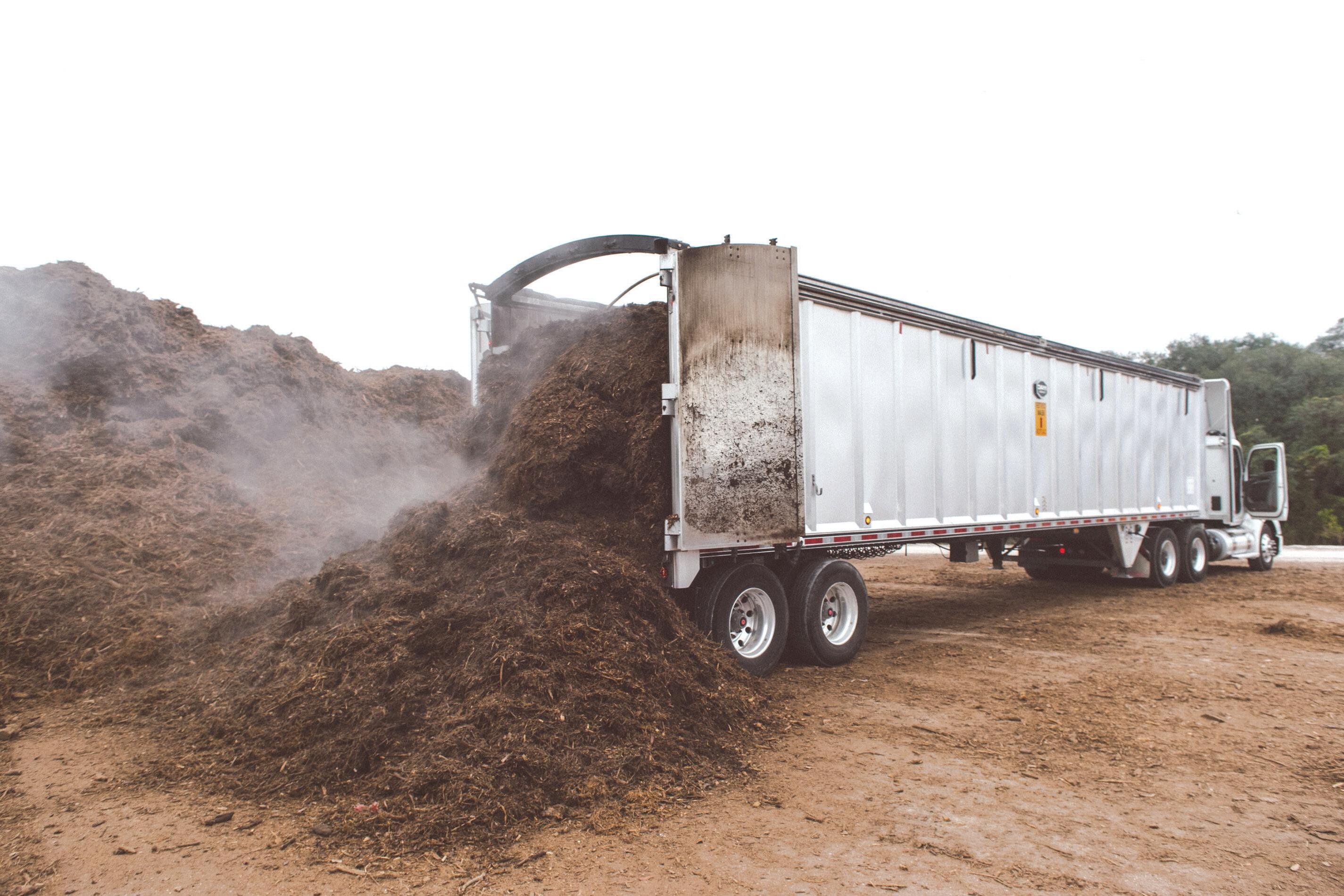
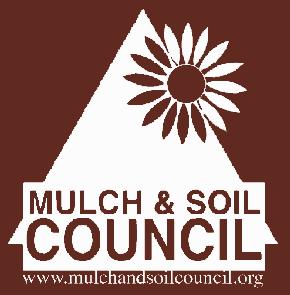
 By RoBeRt LaGasse, executive DiRectoR
By RoBeRt LaGasse, executive DiRectoR
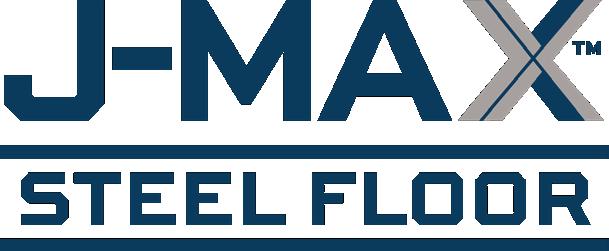
As reported earlier, the MSC Certification Committee created a special sub-committee to investigate the need and opportunities to support and expand product sales to consumers interested in buying organic and allnatural products.
From the industry’s standpoint, you cannot have a mulch or soil “Certified Organic” label under the USDA National Organic Program (NOP) because NOP certifies the end food product and the process it goes through, but it does not certify any individual inputs into the process.
The Organic Materials Review Institute (OMRI) “certifies” that products that meet special criteria and display their logo would not disqualify an organic grower from NOP certification. However, OMRI , itself, states (in a very small print footnote) that “OMRI LISTED” does not mean the product is certified organic. Generally, the state and independent agencies that certify grower operations as “Certified Organic” producers for USDA tend to accept OMRI certification for inputs, but none of them are actually required to accept it — hence the footnote.
While there are other industry issues with OMRI process, procedure, definitions and costs, the question was whether the very cryptic “OMRI LISTED” logo on many lawn & garden products already adequately satisfies the need of consumers, retailers and industry product producers.
To find out, the sub-committee joined with the Industry Statistics Committee to add questions to an already-planned national consumer survey being commissioned through Technometrica Market Intelligence. In early April, TMI surveyed 1,414 consumers from its national consumer database giving a 95% confidence level that the responses are within +/- 2.8% accuracy.
Again, a key question is whether the existing OMRI LISTED certification dominates the consumer market so well that the bar is too high to justify MSC entering the market at this time. Of the 1,414 households we surveyed, 1,108 (77%) had a yard or garden. So, we asked those households with a yard or garden:
1. have you seen/noticed the term or symbol “oMrI lISted” on a product label?


• 63% of consumers have not noticed the OMRI LISTED symbol on bags
• 17% said they had noticed the OMRI LISTED symbol (A total of 181 responses)


• 20% said they were not sure
So, only 17% of households across the country even noticed the OMRI logo on any packages. But since “OMRI” is not self-explanatory as to what it is or means, we went on to ask those who say they noticed the logo to say what they thought it means. The question was an open response (fill in the blank) in order not to suggest any possible meaning in a response option. The responses were then individually reviewed and counted as “wrong” or “correct or almost correct” and any organic or sustainable response was accepted.
2. What does the term or symbol “oMrI lISted” on a product label mean to you?
• 77% of respondents who said they noticed the OMRI symbol on packages gave an incorrect answer for the meaning of the symbol
• Only 23% of respondents who said they noticed the OMRI symbol on packages gave a correct or nearly correct answer for the meaning of the symbol


• Only 3.8% of consumers see and understand correctly what OMRI LISTED means on a package.
The vast majority of responses (77%) were completely wrong or stated they did not know. The remaining “correct or near correct” responses represented only 3.8% of all consumer households in the nation with a yard or garden (estimated 3.84 million households) who see and understand what the OMRI LISTED logo
Continued on page 8


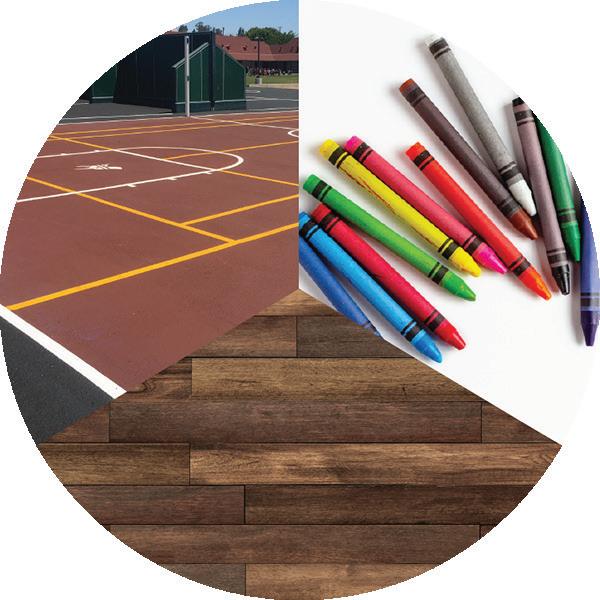






Continued from page 6
means on a product. From that data it appears that OMRI does not have a major or even significant lock on the consumer lawn & garden market.
The next issue the sub-committee addressed was the consumers’ attitudes on “organic” vs “all-natural”. Organic is a term that is used in many different ways and has evolved, or devolved, into multiple meanings for the consumer public. We are not talking about the fanatic organic farming community but rather the general gardening public who have no intention of seeking NOP certified organic status but want what they believe is a natural or “chemical free” product. To avoid conflicts with the fervent organic lobby, using an acceptable alternative for consumers could be useful; so, we asked:
3. thinking about garden products, generally speaking, does “organic” or “All Natural” mean the same to you? (yes/No/Not Sure)

• 48% of the public believe organic and all-natural have the same meaning



• 36% of the public believe the terms are not the same

• 15% of the public were not sure


The largest group of households with a yard or garden (49%) believe organic and all-natural are the same. Households who believe the terms are different represent 36% of respondents which is 25% LESS than those who believe they are the same. The number of households who would accept all natural and organic equally is estimated at a very significant market of over 48.4 million households.
The sub-committee also considered that there are no “certified organic” mulch or soil products (remember OMRI disclaims certified organic) in the market but there are products labeled just organic. That raises the question of whether the public would prefer a simple organic label compared to a certified all natural by the MSC label; so, we asked:
4. If you go shopping for soil or mulch and come across a bag labeled “organic” and another labeled “Certified All Natural by the Mulch & Soil Council,” which one are you more likely to buy?

• 28% of consumers would choose organic over “Certified All Natural by MSC”
Continued on page 12





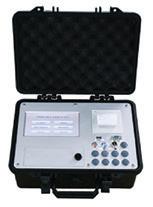






MISSOULA, MT — The U.S. District Court for the District of Montana (Court) has ruled that the US Forest Service (USFS) may continue using aerial fire retardants while pursuing a Clean Water Act (CWA) permit, a AerialFireMagazine.com article reports.
In June 2022, The U.S. Environmental Protection Agency (EPA) issued test orders to require companies to conduct and submit testing on per- and polyfluoroalkyl substances (PFAS), chemicals that comprise fire retardants (in addition to many other industrial and consumer products). When EPA announced its Strategic Roadmap to confront PFAS contamination nationwide, the agency also released the National PFAS Testing Strategy to help identify PFAS data needs and require testing to fill those gaps.

The court’s ruling came following a case brought
by Forest Service Employees for Environmental Ethics (FSEEE) against the U.S. Forest Service (USFS) that sought to stop USFS’ use of aerial fire retardants during firefighting activities.



In the PFAS National Testing Strategy, EPA assigned 6,504 PFAS into smaller categories based on similarities in structure, physical-chemical properties, and existing toxicity data. EPA selected 6:2 fluorotelomer sulfonamide betaine (CASRN 3445529-3) as the first order issued pursuant to the National PFAS Testing Strategy. This chemical substance is a surfactant used to make commercial fire-fighting foams and may be found in certain floor finishes. The EPA noted that 6:2 fluorotelomer sulfonamide betaine has been manufactured (defined to include importing) in significant quantities (more than 25,000 pounds in a given year) according to TSCA Chemical Data


Reporting (CDR) rule reports.
CDR data indicate that at least 500 workers in a given year could be potentially exposed to this chemical. Although there is some hazard and exposure information about this PFAS, EPA found there is insufficient data to determine the effects on human health associated with the inhalation route of exposure. The agency issued its first test order to address the need for further data. The Chemours Company, DuPont De Nemours Inc., E. I. du Pont de Nemours and Company, National Foam Inc., and Johnson Controls Inc. were the recipients of the first test order.
Based on available information and predictive models, testing on 6:2 fluorotelomer sulfonamide betaine will also inform the agency’s understanding of the human health effects of 503 additional PFAS with similar structures as detailed in the Testing Strategy.
On October 11, 2022, Forest Service Employees for Environmental Ethics (“FSEEE” or “Plaintiff”), represented by Timothy M. Bechtold of Bechtold Law Firm, PLLC, filed a civil action against the United States Forest Service (“Defendant”), seeking declaratory and injunctive relief for alleged discharge of aerial fire retardant into navigable waters of the United States in violation of the Clean Water Act. This case was filed in the U.S. District Court for the District of Montana with Judge Dana L. Christensen presiding.
The plaintiff alleged, that “the U.S. Forest Service and its contractors have discharged and continue to discharge retardant from aircraft into navigable waters without a National Pollution Discharge Elimination System (NPDES) permit.”
“Between 2012 and 2019, the Forest Service discharged retardant pollutant on at least 459 occasions, totaling 761,282.5 gallons, from aircraft directly into national forest navigable waters. The Forest Service asserts that a June 23, 2011, letter from EPA excuses its failure to obtain a NPDES permit. However, the factual basis for the letter – ‘operators [] are not discharging into waters of the US’ – is simply not true,” the plaintiff further alleged.
“The Forest Service acknowledges hundreds of retardant discharges into waterways from misapplications and allowable exceptions.” Plaintiff also alleged that “[the] Forest Service’s discharges of retardant pollutants into waterways from aircraft point sources is continuous, on-going, and unpermitted, in violation of the Clean Water Act.”
On March 9 of this year, a coalition in opposition to the complaint was formed by the California Forestry Association, the Town of Paradise, California, which was devastated in the 2018 Camp Fire; Butte and Plumas counties, California; Rural County Representatives of California; American Forest Resource Council; National Alliance of Forest Owners; Federal Forest Resource Coalition; Montana Wood Products Association; Oregon Forest Industry Council; Washington Forest Protection Association; California Farm Bureau Federation; National Wildfire Suppression Association; and California Women for Agriculture to petition the U.S. District Court for the District of Montana to join the case brought in October 2022 by Forest Service Employees for Environmental Ethics.
The U.S. District Court for the District of Montana granted the coalition the right to file an amicus brief and participate in the upcoming oral arguments on the summary judgment motion. The coalition filed the amicus brief in April.

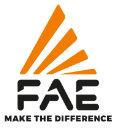








WASHINGTON, D.C. — Based on data submitted by 89 survey respondents to its anaerobic digestion (AD) data collection project, the United States Environmental Protection Agency (EPA) estimates total processing capacity for food waste in 2019 was more than 42.7 million tons. The total amount of food waste processed was more than 17.5 million tons. The total reported amount of non-food waste processed in 2019 was approximately 945,000 tons.
The U.S. EPA in early April released its fourth report produced as part of its anaerobic digestion (AD) data collection project begun in 2014. The latest report is based on a survey completed in 2021 of AD facilities that accept food waste.

Respondents reported on data for three digester types - stand-alone food waste digesters; on-farm digesters that co-digest food waste; and digesters at waste resource recovery facilities (WRRFs) that co-digest food waste.
A total of 99 respondents completed the survey in 2021. Data points are related to process capacity, the amount of food waste processed, the amount of non-food waste process, feedstock types, feedstock sources, the amount of biogas produced, and tipping fees reflect calendar year 2019. The remaining data points, including preprocessing/de-packaging, operational specification, biogas uses, gas cleaning systems, solid digestate uses, and liquid digestate uses reflect circumstances in 2021, according to the EPA.
Based on data submitted by 91 survey respondents (down from 118 for the previous survey), the total amount of biogas produced by all three types of digesters in 2019 was 29,877 standard cubic feet per minute (SCFM), which is equivalent to 93 megawatts (MW) of installed capacity.

The top five food-based feedstock types accepted by AD facilities in the U.S. as of 2019 were beverage processing industry waste; fats, oils and greases (FOG); food processing industry waste; other (not specified); and source-separated organics. The top use of all three digester types was the production of combined-heat-andpower CHP.
The EPA cautions that data on processing capacity, food waste and non-food waste processed, and biogas production are likely underestimated due to the number of operational facilities that did not respond to the survey. The annual surveys will continue through 2025.

Continued from page 8
• 43% would choose Certified All Natural by MSC over organic (a 50% increase)

• 29% of respondents were unsure which they would choose.
Fewer than 1 in 3 consumers would choose a product labeled just organic, but 50% MORE (or 42%) would buy the product labeled certified all natural by the Mulch & Soil Council. Based on this data, Council staff will further investigate the option of creating a “Certified All Natural by the Mulch & Soil Council” for the Organic Sub-Committee to consider at their next meeting in July. Members with an interest in this committee activity should contact the Council office for more information.
In April, a federal judge blocked the EPA’s WOTUS rule from being enforced in 24 states, issuing a preliminary injunction similar to a ruling in March already blocking the rule in Texas and Idaho. The Biden administration’s 2023 Waters of the US, or WOTUS, rule that took effect March 20 is now enjoined in more than half the country.
The 24 states led by West Virginia have “persuasively shown that the new 2023 Rule poses a threat to their sovereign rights and amounts to irreparable harm,”
Judge Daniel L. Hovland of the US District Court for the District of North Dakota ruled. “The States involved in this litigation will expend unrecoverable resources complying with a rule unlikely to withstand judicial scrutiny,” he said.

West Virginia Attorney General Patrick Morrisey said in a statement the rule upsets the balance of power between the states and the federal government. “It’s a decades long effort by the EPA to regulate purely intrastate waters without the explicit consent of lawmakers,” Morrisey said. “It creates unneeded delays and costs for farmers, contractors, ranchers and anyone who cares about economic activity.”
The latest 24 states include West Virginia, North Dakota, Georgia, Iowa, Alabama, Alaska, Arkansas, Florida, Indiana, Kansas, Louisiana, Mississippi, Missouri, Montana, Nebraska, New Hampshire, Ohio, Oklahoma, South Carolina,
South Dakota, Tennessee, Utah, Virginia, and Wyoming.
The rule determines which wetlands and waterways are protected under the Clean Water Act as waters of the US. It is enforced by the EPA and the Army Corps of Engineers.


The USDA’s Economic Research Service in March published a report that aims to help increase the value of animal manure for farmers. The document, in part, describes existing and emerging technologies that have the potential to increase the value of manure or reduce manure management costs. It also describes current manure production, handling, storage and use data gathered through the USDA’s Agricultural Resource Management Survey.
The study found that there is substantial opportunity for increasing the use of manure as fertilizer. According to the USDA’s analysis, manure is currently applied to only 8 percent of the 240.9 million acres planted to seven major U.S. field crops. The agency said liquid-solids separation technologies; the use of manure additives, including biochar; and composting can help increase the value of manure fertilizer.


The study also addresses non-fertilizer uses for manure, including anaerobic digestion and thermochemical processes. USDA researchers site a 2018 study that examined the barriers or hurdles that U.S. dairy and swine producers face regarding the adoption of anaerobic digestion technology. That study found that greater adoption could be encouraged by lower construction costs, increased government grants and higher electricity prices.
In its report, the ARS also discusses the impact of renewable energy credits in driving renewable natural gas (RNG) growth, including those generated through the federal Renewable Fuel Standard program and regional fuel programs, such as California’s Low Carbon Fuel Standard. RNG generated via the anaerobic digestion of manure is eligible to generate credits under such programs.
The report references the U.S. EPA’s AgSTAR data, which indicates 322 on-farm anaerobic digestion systems were operational in the U.S. as of the end of 2021, including 50 systems that began operations during that year. Roughly 78 percent of U.S. on-farm anaerobic digestion facilities are located on dairies. Financial factors currently limit the use of anaerobic digestion systems on farms with less than 500 cows, according to the USDA. The systems are most common at concentrated animal feeding operations (CAFOs) with more than 1,000 animal units.
Continued on page 14
www.keithwalkingfloor.com/j-max

Double-brokering — when a carrier accepts a load and then illegally re-brokers it to another carrier — is on the rise, costing brokers and carriers millions of dollars, and hurting legitimate businesses. Several red flags can alert companies to scams, and brokers said they’re scrutinizing everything from ELD records to IP addresses.
There are two primary types of double-brokering. In one, legitimate carriers accept loads but don’t have capacity, so they double-broker it even though they don’t have authority. While it is still illegal, there are often no claims unless there is an accident or a load is damaged. With fraudulent double-brokering, someone contracts with what they think is a legitimate motor carrier that then re-brokers the load. In the end, Brokers and shippers do not know who is actually in custody of the goods. If something goes wrong, there is often no cargo insurance. Even worse, there is a higher risk of theft.
In Q4 2022 and Q1 2023, Truckstop, a load board provider, saw a 400% increase in double-brokering complaints according to Brent Hutto, its chief relationship officer. Today, about 30% of freight is moved in the spot market. The sheer volume going through the spot market is much higher than it has ever been and is only predicted to increase,” Hutto said, adding that double-brokering tends to increase in a down market. “I don’t know why that is other than, anecdotally, the marketplace is more desperate to get freight at a profitable level.”
What can you do?
• Know your broker and verify information
• Check addresses on bills of lading


• Ask your broker how they deal with double brokering
• Be suspicious of quick-pay options
• Beware of fuel advance demands
• Verify the insurance listed by the carrier for coverage and number of trucks
The Mulch & Soil Council began in 1972 and is the national association of producers of horticultural mulches, consumer potting soils and commercial growing media. Its mission is to define quality products and promote an open market and fair competition. For more information about MSC, visit mulchandsoilcouncil.org or call 806-832-1810.


www.quadco.com









WASHINGTON, D.C. — The United States Environmental Protection Agency, (EPA) wants to list certain per- and polyfluoroalkyl substances (PFAS) as hazardous substances, reports Waste-Management-World.com.




The PFAS chemical family includes thousands of compounds that are resistant to heat, water, and oil, making them valuable for applications like nonstick cookware, water-repellent fabrics, firefighting foams, and food packaging materials. The number and prevalence of these chemicals makes studying their effects on humans, animals, and the environment challenging. Scientists have found that many PFAS persist, giving them the nickname “forever chemicals.” Some, such as perfluorooctanoic acid (PFOA or C8) and perfluorooctane sulfonate (PFOS), commonly used surfactants, have been detected in the environment, wildlife, and human populations globally. Although no direct links to health effects have been proven to date, research suggests that PFAS may
be associated with reproductive and developmental problems, liver and kidney damage, immune system effects, and an increased risk of certain cancers.
Concerns about PFAS contamination in water supplies, soil and food and liability have prompted efforts to reduce their use in various industries and to regulate their presence in the environment and in consumer products. In addition to voluntary phaseout efforts by chemical companies, numerous countries and jurisdictions have implemented regulations or guidelines to limit the use of PFAS and set standards for their presence in drinking water and other media.
Composters are considered passive receivers of PFAS chemicals, even though the substances are in all of feedstocks, from biosolids to food waste, non-compostable food packaging that get mixed into recycling, as well as contaminated rainwater and air emissions from upstream industrial neighbors. There are no easy or cost-effective ways to test for them or to dispense of or break them down.
Currently, PFAS are regulated differently at the state level in the United States. In May, a new bill, The Resource Management PFAS Liability Protection Act (S 1429), was introduced in the U.S. Senate. The proposed bill, if passed, would protect some solid waste management, such as transfer stations and other facilities defined in the Solid Waste Disposal Act, along with covered composting operations, from liability claims if the EPA decides to list certain PFAS compounds as hazardous substances. The bill would exclude composters and solid waste facility operators from liability for certain “costs and damages” associated with the release of certain PFAS into the environment.
Actually, S 1429 is one part of a series of five bills, each of which is designed to protect specific industries from unintended liability or unintended costs. Facilities and operations still have to meet permitting requirements, and they wouldn’t be protected if they were found to be “grossly negligent or intentionally negligent in the discharge, disposal, management, processing, transportation or storage” of PFAS.
Certain states have opted to proceed on the side of caution. Maine required shutdown of biosolids compost on farms in Maine; Colorado is now requiring testing of biosolids compost. Other states have set varying limits for the presence of PFAS compounds in compost. The EPA will complete a health risk assessment by the end of 2023 or early 2024 of risk tolerance in the human body.

Trade groups for the chemical manufacturing industry and the waste management industry have come out in opposition to the EPA’s intent to list PFOS and PFOAs, citing concerns about administrative costs and liability. Meanwhile, Germany, the Netherlands, Denmark, Norway and Sweden each have plans in the works to ban the manufacture of PFAS, most of their uses, and their placement on the EU market.
The next level of industrial automation is here and it’s designed to be the workhorse of your production floor. Our HAMER Brand form, fill & seal and open mouth bagging machines are the most capable and flexible available, improving machine uptime and reducing annual maintenance costs by almost 60%. There’s a reason why we are the industry’s first choice for reliable bagging automation.
 ARPAC HAMER OHLSON FISCHBEIN
ARPAC HAMER OHLSON FISCHBEIN
www.nVenia.com/betterway

Premier Tech recently unveiled its new state-ofthe-art headquarters in the United States for its Systems and Automation business group in Montgomery, Alabama. The completion of the 33-million-dollar investment marks Premier Tech’s commitment towards its customers and the U.S. market. This comes just a few weeks after Premier Tech and its Systems and Automation business group announced a 13-million-dollar investment for a new technology and manufacturing center in Salt Lake City, Utah.
The new 167,000 square-feet facility will become Premier Tech’s new solution hub for its Americanbased clients allowing for increased reaction time and a more intimate and closer relationship with customers.
“The opening of this world-class facility is the culmination of many months of hard work for our teams in Riviere-du-Loup as well as here in Montgomery, with the contribution of our local partners like Chambless King Architects. Our new U.S. headquarters reinforce our commitment to modernize our sites around the world and enhance our customer experience across the United States,” says Simon Roy, president and chief operating officer of Premier Tech Systems and Automation.


Spring time is mulch time, and all about productivity. You need to produce tonnage and you need to produce it now. That’s what the Diamond Z DZH4000TK is designed for ... and does.


The DZH4000TK will out grind competitor’s comparably sized machines. The C18 Caterpillar engine combined with our aggressive down-cut mill delivers production rates up to 120 tons per hour. The smaller stature offers easy transportability. Friendly operation, ease of maintenance and attention to detail are throughout ... hallmark traits for all Diamond Z grinders.
As a track-mounted horizontal grinder, the DZH4000TK allows you to operate just about anywhere a portable grinder cannot. With up to 755 horsepower, production capacities up to 120 tons per hour, and an innovative, operator-friendly design, the DZH4000TK is the simple horizontal-tracked choice for your most difficult jobs.









Amidst the growing demand for wood fiber to complement soil mixes, Premier Tech introduces the BPE Series Wood Fiber Machine.
This compact, robust, and energy-efficient equipment allows for on-site production of wood fiber. The patented technology applies high pressure to the raw materials, generating heat above 100C, which produces and sanitizes fiber, meeting RHP standards.

With a production capacity of up to 12 m3/h (16 yd3/h) and an expansion ratio of up to 1:3*, it consumes 30% less energy per cubic meter produced than typical refiners, resulting in significant cost savings.
Various wood by-products can be used, including white softwood chips, forest residue, and compost wood. The produced fiber maintains its volume when mixed and has excellent water dispersion capacity for root development.

For more information, visit ptchronos.com/wood-fiber-machine or email us at info@ptchronos.com.
COLLINSVILLE , IL — A public utility company has kept close to 1000 tons of wood out of landfill by recycling retired and damaged wooden power poles, according to a MyJournalCourier.com article.

In 2022, the first year of the initiative, Ameren Illinois recycled 750 tons of utility poles, while Ameren Missouri put 185 tons of power poles to new use.
Ameren contracted Blackwood Solutions, an Indiana-based recycling company that specializes in new utility pole hauling and treated and untreated wood recycling. The company also offers a service for recycling old or broken power poles for fencing, landscaping or building materials.
A typical 40-foot pole weighing about 1,000 pounds is useful for 40 years. Ameren Illinois installs about 12,000 poles per year and has about 1.3 million single poles and nearly 9,500 multi-pole structures across its 43,700-square-mile service territory.
This year, Ameren Illinois is extending its agreement with Blackwood Solutions to include recycling wooden pallets.
The Ameren Corporation is an American power company created in 1997 through the merger of St. Louis, Missouri’s Union Electric Company and Central Illinois Public Service Company of Springfield, Illinois.

14” Capacity Horizontal Grinder
» Diverse line of models ranging from 14” to 45” capacity


» Patented cuttermill processes material utilizing less fuel
» Wide variety of teeth and screen sizes available
» Produces a high-quality end product
» Top notch aftermarket support
SCAN TO LEARN MORE
40 YEARS OF QUALITY TREE CARE AND RECYCLING EQUIPMENT

PVP Industries Rocks It With Perlite, Vermiculite
PAGe 1
News From The Mulch & Soil Council

PAGe 6
Fire Retardant Use – Federal Court Decision

Prioritizes Lives, Land, Businesses, and Forests
PAGe 10
EPA Updates Data on Anaerobic Digestion
PAGe 11
Proposed bill to List Per- and Polyfluoroalkyl Substances as Hazardous Materials
PAGe 16
Indiana Company Recycles Nearly 1000 Tons of Utility Poles
PAGe 18
Product / Equipment Profiles
PAGe 18
